Hello World
In this site I will show you several places in Porto
Palácio da Bolsa
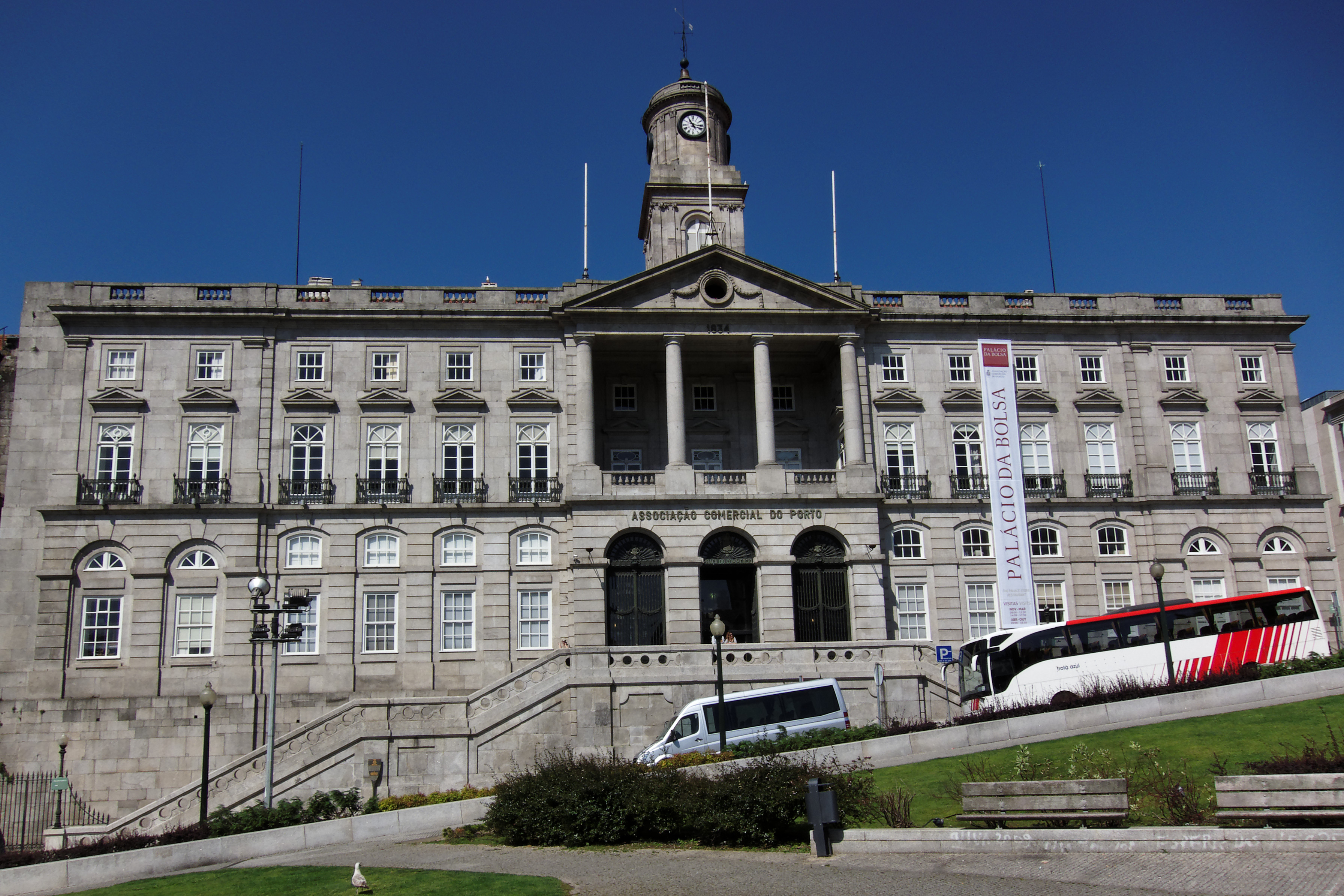 Photo by Barcex
Photo by Barcex
Palácio da Bolsa, also known as the Stock Exchange Palace, is a magnificent historical building located in the city of Porto, Portugal. It is one of the most iconic landmarks in Porto and a UNESCO World Heritage Site since 1996. The palace serves as the headquarters of the Porto Commercial Association and is a prominent cultural and touristic attraction in the city.
Construction of Palácio da Bolsa began in 1842 and was completed in 1910. The building showcases a mix of architectural styles, predominantly neoclassical and neopaladian, with influences from the Gothic and Renaissance periods. The palace was designed by architect Joaquim da Costa Lima Júnior, and several other notable architects contributed to its construction over the years.
The interior of the Palácio da Bolsa is truly impressive, featuring opulent halls, grand staircases, intricate woodwork, and beautiful decorative elements. One of the most famous rooms within the palace is the Arabian Hall (Salão Árabe), which stands out for its remarkable Moorish Revival design. This ornate chamber is adorned with exquisite golden decorations, stunning chandeliers, and intricate geometric patterns.
Visitors to Palácio da Bolsa can explore various other rooms and halls, including the Assembly Room, the Court Room, the Pátio das Nações (Nations' Courtyard), and the Tribunal Room. Each space showcases remarkable craftsmanship and architectural details, reflecting the palace's historical significance as a center of commerce and trade.
Guided tours are available to visitors, providing insights into the history, art, and architecture of the palace. The tours typically include visits to the main rooms and offer an opportunity to learn about the important role Palácio da Bolsa played in Porto's commercial and industrial development.
Additionally, Palácio da Bolsa hosts numerous cultural events, exhibitions, and conferences throughout the year. It is also a popular venue for official receptions and ceremonies.
In summary, Palácio da Bolsa in Porto is a magnificent architectural gem that showcases a blend of styles and serves as a testament to Porto's historical significance as a hub of commerce. Its opulent interiors and rich history make it a must-visit attraction for tourists exploring the city.
Igreja da lapa
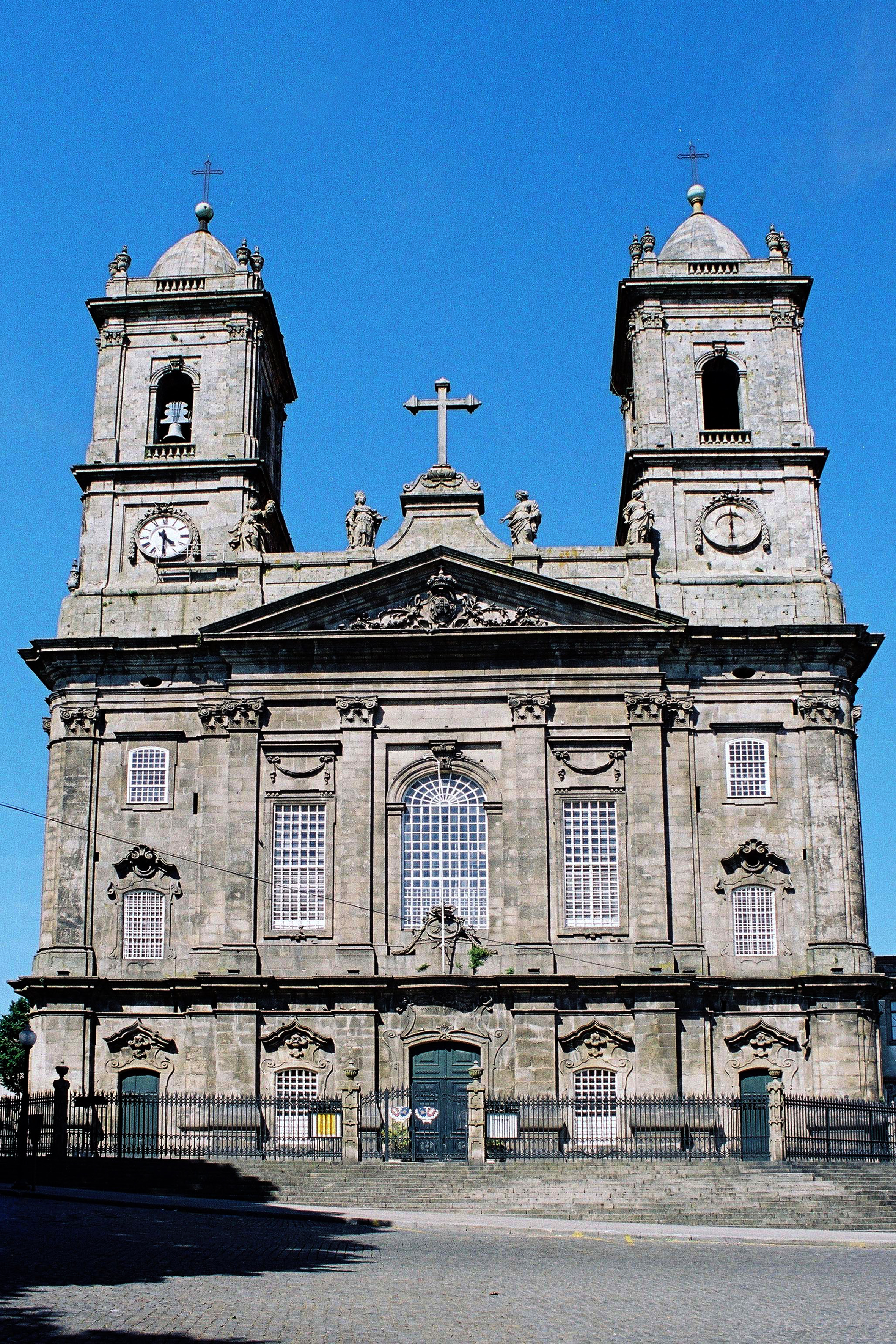 Photo by António
Amen
Photo by António
Amen
Igreja da Lapa, also known as the Church of Lapa, is a prominent Catholic church located in the city of Porto, Portugal. It is one of the most significant religious buildings in the city and holds great historical and architectural value. The church is dedicated to Our Lady of Lapa, a title referring to the Virgin Mary.
Construction of Igreja da Lapa began in 1756 and was completed in 1825, although the church underwent some modifications and additions in the following years. The architectural style of the church is primarily neoclassical, with some influences from the Baroque period.
The façade of Igreja da Lapa is characterized by a grand portico with Corinthian columns and a triangular pediment adorned with intricate sculptures. Above the entrance, there is a central niche housing a statue of Our Lady of Lapa. The façade is symmetrical and features ornamental details, giving the church an elegant and harmonious appearance.
The interior of the church is equally impressive. It is adorned with beautiful decorative elements, including elaborate altarpieces, sculptures, and paintings. The high altar is particularly notable, featuring a stunning marble altarpiece and a large painting depicting the Assumption of the Virgin Mary.
Igreja da Lapa also houses several chapels dedicated to various saints and religious figures. One of the most significant chapels is the Chapel of St. Anthony, which contains a venerated image of the popular saint. The chapel is decorated with marble and gilt elements, creating an atmosphere of religious devotion and splendor.
The church's architecture and artwork reflect the religious fervor and artistic craftsmanship of the time. Igreja da Lapa has become an important pilgrimage site, attracting both locals and tourists who come to admire its architectural beauty and seek spiritual solace.
Surrounding the church is the Lapa neighborhood, which has a tranquil atmosphere and features beautiful residential buildings. The area is known for its charming streets, small squares, and traditional Portuguese architecture.
In summary, Igreja da Lapa in Porto is a magnificent neoclassical church that holds religious and architectural significance. Its elegant façade, richly adorned interior, and historical importance make it a compelling destination for visitors interested in exploring Porto's cultural and religious heritage.
Capela das almas
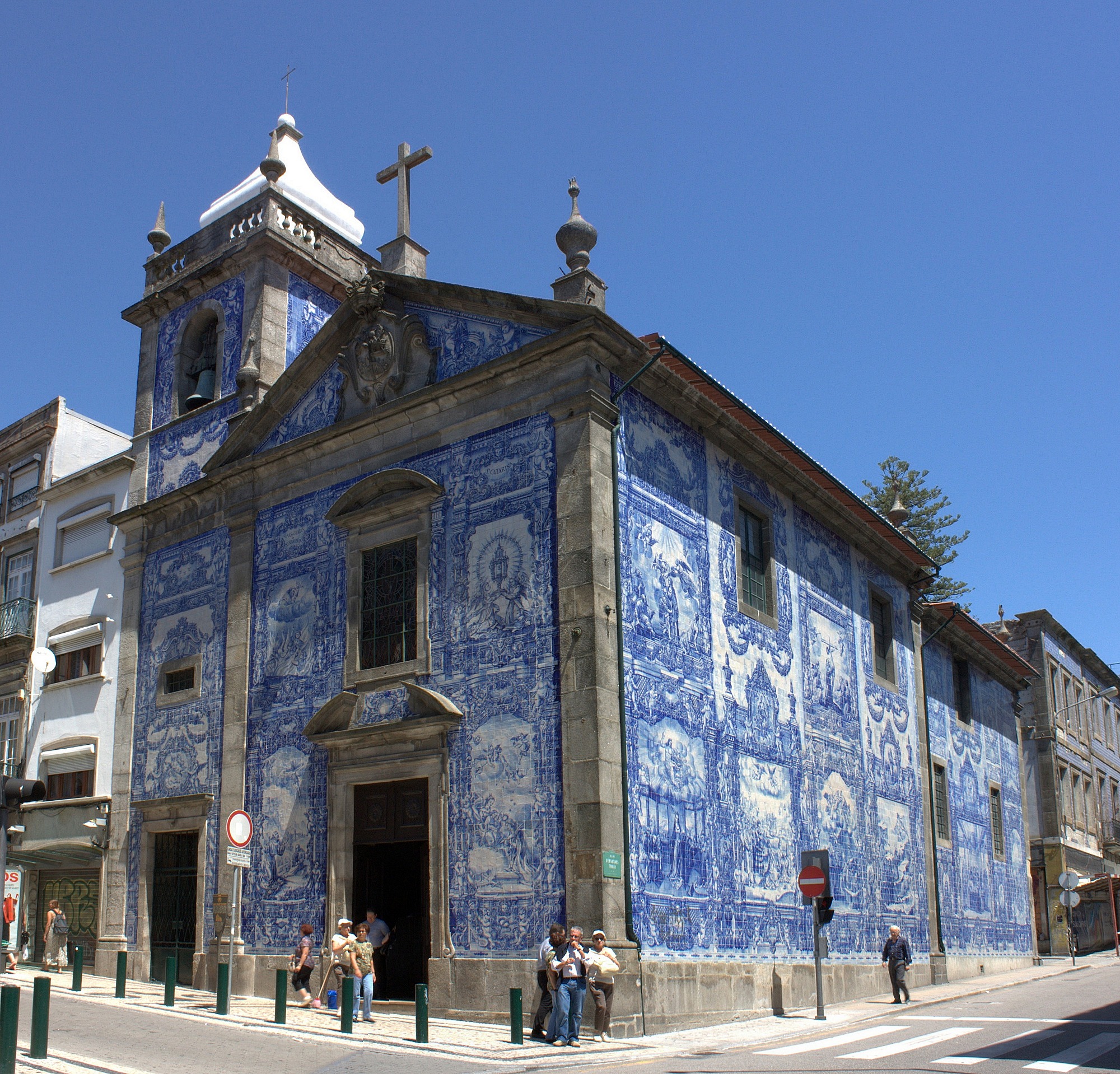 Photo by Nelson Rocha
Photo by Nelson Rocha
Capela das Almas, also known as Chapel of Souls, is a captivating religious landmark located in the city of Porto, Portugal. Situated in the heart of the city, it is renowned for its striking exterior covered in vibrant azulejo tiles, depicting religious scenes and symbols.
The construction of Capela das Almas took place in the late 18th century, and it was later renovated in the early 20th century. The chapel was designed by architect José de Costa Meireles and decorated by artist Eduardo Leite, who was responsible for the creation of the magnificent tile panels that adorn the exterior.
The most notable feature of Capela das Almas is its façade, which is entirely covered in blue and white azulejo tiles. Azulejos are traditional Portuguese ceramic tiles that are intricately painted, often depicting scenes from history, religion, or daily life. The tile panels on the chapel's façade depict religious scenes, including the lives of various saints and the martyrdom of the souls in purgatory.
The azulejo panels are meticulously crafted and tell a visual story that reflects the strong religious and cultural traditions of Portugal. The vibrant blue and white colors create a stunning visual contrast against the surrounding buildings, making the chapel a true standout in the area.
The interior of Capela das Almas, while modest in comparison to its exterior, features a serene and intimate atmosphere. It contains a small altar and religious icons, providing a peaceful space for prayer and reflection.
Capela das Almas is a beloved landmark in Porto and holds significant cultural and religious importance for the local community. The chapel's unique and captivating exterior has made it a popular subject for photographers and a cherished symbol of the city.
Visitors to Porto often include Capela das Almas on their itineraries to admire the remarkable azulejo artwork and experience the architectural charm of the chapel. It serves as a testament to the rich artistic heritage of Portugal and stands as a captivating example of the country's devotion to religious expression through art.
In summary, Capela das Almas in Porto is a captivating chapel known for its stunning exterior adorned with vibrant azulejo tiles. Its unique beauty and religious significance make it a must-see attraction for visitors exploring the city's cultural treasures.
Catedral do Porto
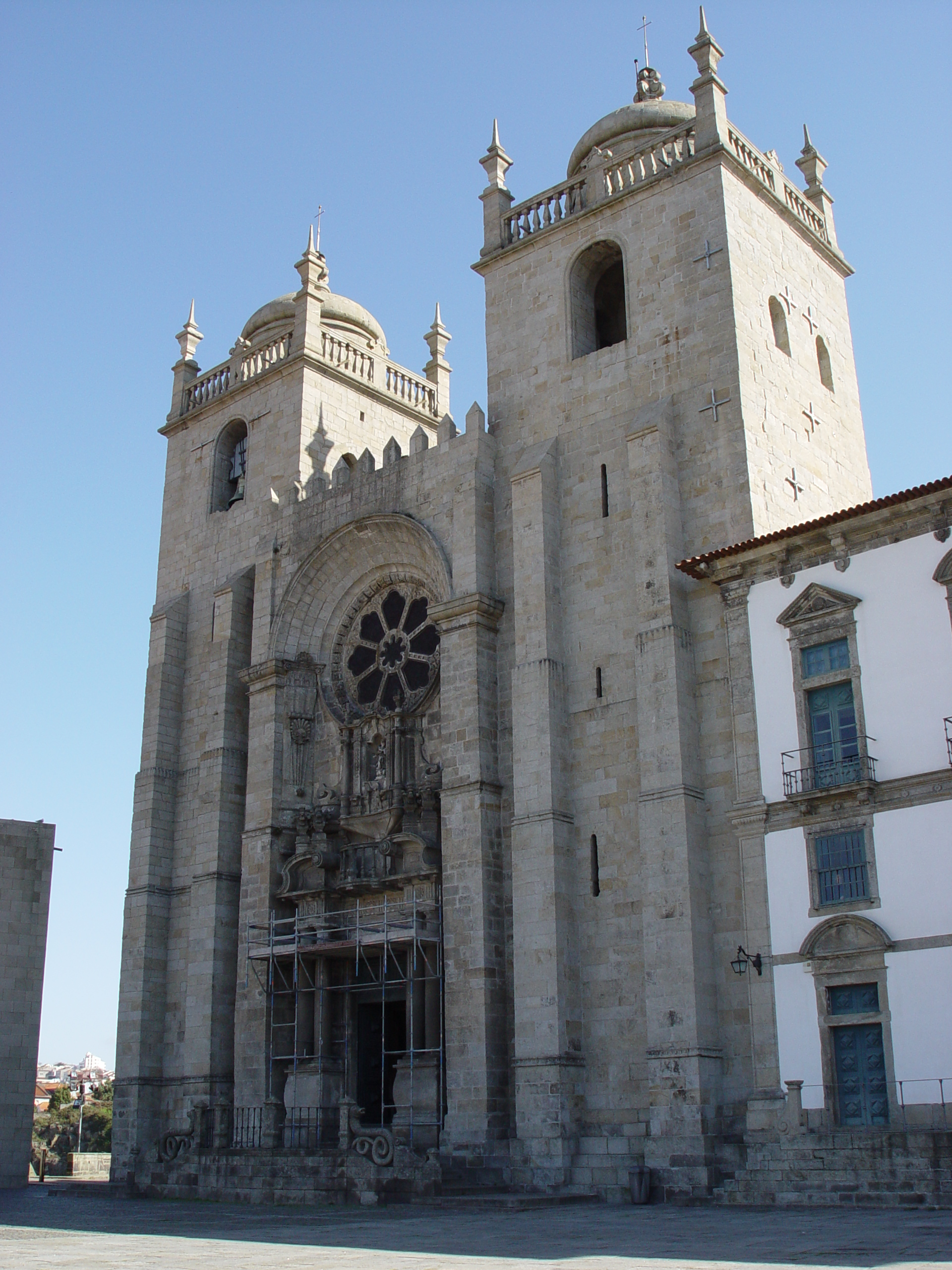 Photo by Alegna13
Photo by Alegna13
The Catedral do Porto, commonly known as Porto Cathedral or Sé do Porto, is an impressive and historic Catholic cathedral located in the city of Porto, Portugal. It is one of the most important religious and architectural landmarks in Porto, attracting both locals and tourists.
Construction of the cathedral began in the 12th century, and it underwent subsequent modifications and additions over the centuries, reflecting various architectural styles. The cathedral combines Romanesque, Gothic, Baroque, and Renaissance elements, making it an intriguing blend of architectural influences.
The exterior of Porto Cathedral is characterized by its fortress-like appearance, with sturdy walls and two massive square towers flanking the main entrance. The façade features intricate stonework and decorative details. Above the entrance, there is a rose window that adds to the cathedral's visual appeal.
Upon entering the cathedral, visitors are greeted by a spacious interior with a solemn and reverent atmosphere. The nave is supported by massive granite columns and features beautiful stained glass windows that cast colorful light onto the stone floor. The interior also houses several chapels, altarpieces, and religious artifacts of historical and artistic significance.
One of the highlights of the cathedral is the Gothic-style cloister, which dates back to the 14th century. The cloister is a serene and peaceful space, adorned with arches, intricate stonework, and a well-maintained garden. It provides a tranquil respite from the bustling city outside.
An additional attraction within the cathedral complex is the Terreiro da Sé, a square located in front of the cathedral that offers panoramic views of the city and the Douro River. It is a popular gathering spot and a great vantage point for capturing photographs of Porto's picturesque skyline.
Porto Cathedral holds religious services and is an active place of worship, with a significant role in the religious life of the local community. It also attracts pilgrims and visitors interested in exploring its historical and cultural significance.
Overall, Porto Cathedral stands as a testament to Porto's rich religious heritage and architectural prowess. Its impressive structure, blend of architectural styles, and spiritual ambiance make it a must-visit destination for those interested in exploring the city's cultural treasures.
Estação de São Bento
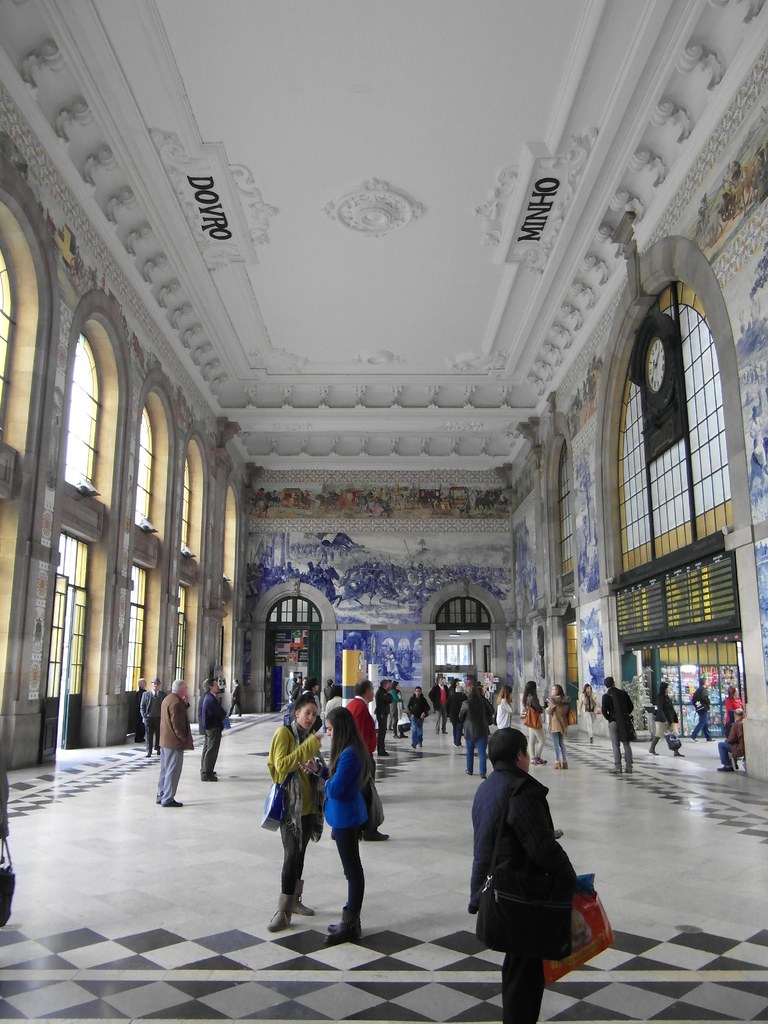 Photo by IngolfBLN
Photo by IngolfBLN
Estação de São Bento, or São Bento Railway Station, is a historic train station located in the city of Porto, Portugal. It is widely regarded as one of the most beautiful railway stations in the world, known for its magnificent tile work and architectural splendor.
The construction of Estação de São Bento began in 1904 and was completed in 1916. The design of the station was overseen by architect José Marques da Silva, who aimed to create a grand and visually striking transportation hub.
The exterior of the station features a neoclassical façade adorned with ornate details and a large clock at its center. However, it is the interior that truly captivates visitors. The main hall of São Bento Station is lined with over 20,000 azulejo tiles, intricately painted with scenes that depict various historical events, daily life, and Portuguese culture.
The azulejo tiles, created by renowned artist Jorge Colaço, create a breathtaking panorama that unfolds as visitors walk through the station. The scenes represent significant moments in Portuguese history, such as battles, religious processions, and rural life. The vibrant blue and white tiles not only add beauty to the space but also serve as a historical and cultural testament to the country.
Apart from the stunning tile work, the station's interior features high ceilings, elegant arches, and an overall sense of grandeur. The platforms are covered by a large iron and glass canopy, allowing natural light to illuminate the space and providing a sense of openness.
Estação de São Bento is not only a functional railway station but also an important historical and cultural landmark in Porto. It serves as a gateway to the city and offers convenient connections to various destinations within Portugal.
Beyond its transportation function, the station has become a popular tourist attraction. Visitors often take their time to admire the intricate tile work, soak in the historical ambiance, and capture memorable photographs of the station's beauty.
In summary, Estação de São Bento is a remarkable railway station in Porto, renowned for its stunning azulejo tile work and architectural elegance. It is a must-visit destination for tourists interested in Porto's cultural heritage and those seeking to experience the seamless blending of transportation and art.
Castelo do queijo
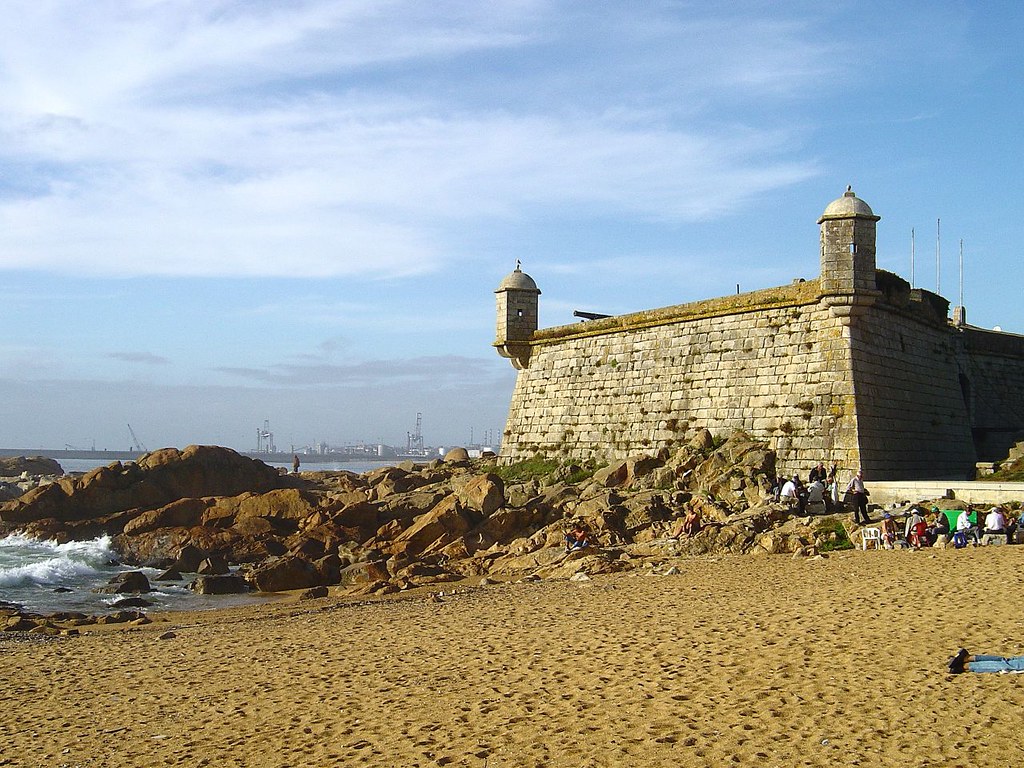 Photo by Portuguese_eyes
Photo by Portuguese_eyes
Castelo do Queijo, also known as the Cheese Castle, is a historic fortress located in Porto, Portugal. Situated on the coast, the castle has become an iconic landmark and a popular destination for locals and tourists alike.
The construction of Castelo do Queijo dates back to the 17th century when it was built as a coastal defense structure to protect the city against invasions. The castle was strategically positioned at the mouth of the Douro River, guarding the entrance to the city's harbor. Its name, "Cheese Castle," comes from the rounded shape of the rock formation on which it stands, resembling a large cheese wheel.
The castle features a bastion-style fortification, with thick stone walls, battlements, and gun embrasures. Its architecture reflects the military engineering practices of the time, showcasing a blend of medieval and Renaissance influences. While the castle's primary purpose was defense, it also served as a lighthouse to guide ships entering the port.
Over the years, Castelo do Queijo underwent several modifications and renovations. In the 19th century, during the Napoleonic Wars, the castle suffered damage and was partially destroyed. However, it was later restored and preserved as a historical monument.
Today, Castelo do Queijo stands as a picturesque landmark, offering panoramic views of the Atlantic Ocean and the coastline. The castle is surrounded by a scenic park, providing a pleasant area for leisurely walks, picnics, and enjoying the seaside ambiance. The park is especially popular during the summer months when locals and visitors gather to relax and soak up the sun.
The castle itself is not open for public access, as it is primarily an exterior structure. However, visitors can appreciate its architecture and take memorable photographs of its unique setting against the backdrop of the ocean.
Castelo do Queijo is also in close proximity to Matosinhos, a neighborhood known for its seafood restaurants and vibrant beach culture. Many visitors combine a visit to the castle with a leisurely stroll along the nearby promenade or a delightful seafood meal in one of the local eateries.
In summary, Castelo do Queijo is a historic fortress in Porto that combines military heritage, coastal beauty, and panoramic views. While it is primarily an exterior structure, its significance as a symbol of Porto's history and its picturesque location make it an appealing destination for those exploring the city.
Palácio do freixo
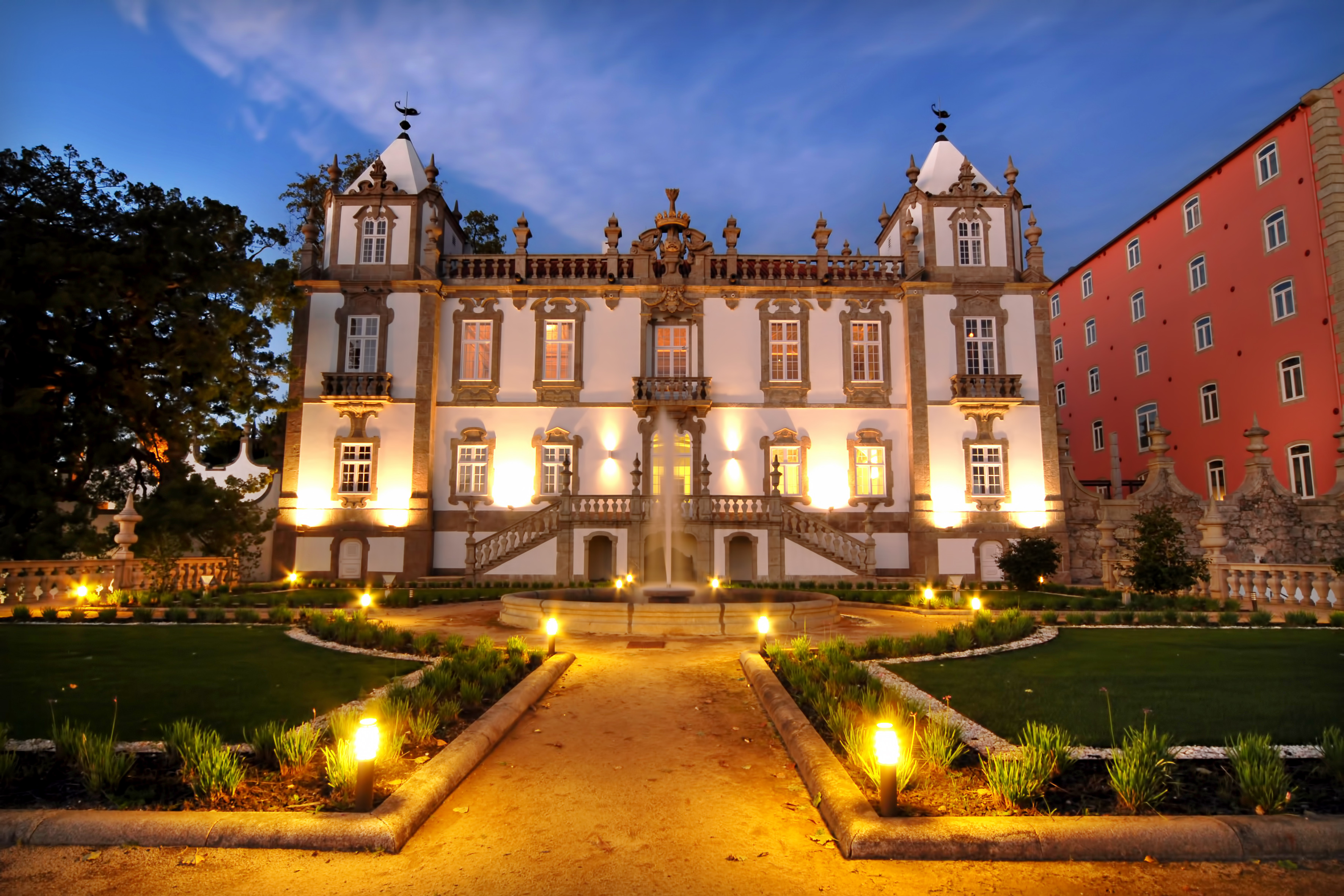 Photo by António
Amen
Photo by António
Amen
Palácio do Freixo, also known as Freixo Palace, is a magnificent palace located in the city of Porto, Portugal. Situated on the banks of the Douro River, it is an outstanding example of Baroque architecture and is considered one of the most important historical buildings in Porto.
The construction of Palácio do Freixo began in the 18th century, specifically in 1742, and it was completed in 1750. The palace was designed by renowned architect Nasoni, who is also known for his work on other notable buildings in Porto. The palace was commissioned by Frei Jerónimo de Távora e Noronha, an influential Portuguese nobleman, and it served as his residence.
Palácio do Freixo exhibits a symmetrical design and features a grand façade adorned with intricate stonework and decorative elements. The palace is characterized by its imposing entrance gate, which is flanked by two large towers. The central part of the palace is crowned with a triangular pediment and statues.
The interior of Palácio do Freixo is equally impressive, boasting exquisite baroque decoration and opulent details. The main rooms of the palace feature intricate plasterwork, frescoes, and beautiful painted ceilings. The grand staircase is a particular highlight, with its ornate balustrades and elegant design.
The palace is surrounded by beautifully landscaped gardens, offering a serene retreat from the bustling city. The gardens feature manicured lawns, fountains, and statues, creating a peaceful atmosphere that complements the grandeur of the palace.
Today, Palácio do Freixo serves as a luxury hotel and is managed by the Pousadas de Portugal, a renowned chain of historic hotels in Portugal. The hotel offers luxurious accommodations, fine dining, and amenities that cater to visitors seeking an upscale experience in a historical setting.
While the palace is primarily a hotel, it is possible to visit the public areas and admire its architectural and artistic features. Visitors can also stroll through the gardens and enjoy the views of the Douro River.
Palácio do Freixo is a testament to Porto's rich architectural heritage and represents a significant historical and cultural landmark in the city. Its combination of grandeur, historical importance, and scenic location make it a captivating destination for visitors interested in exploring Porto's cultural treasures.
Igreja de Santo Ildefonso
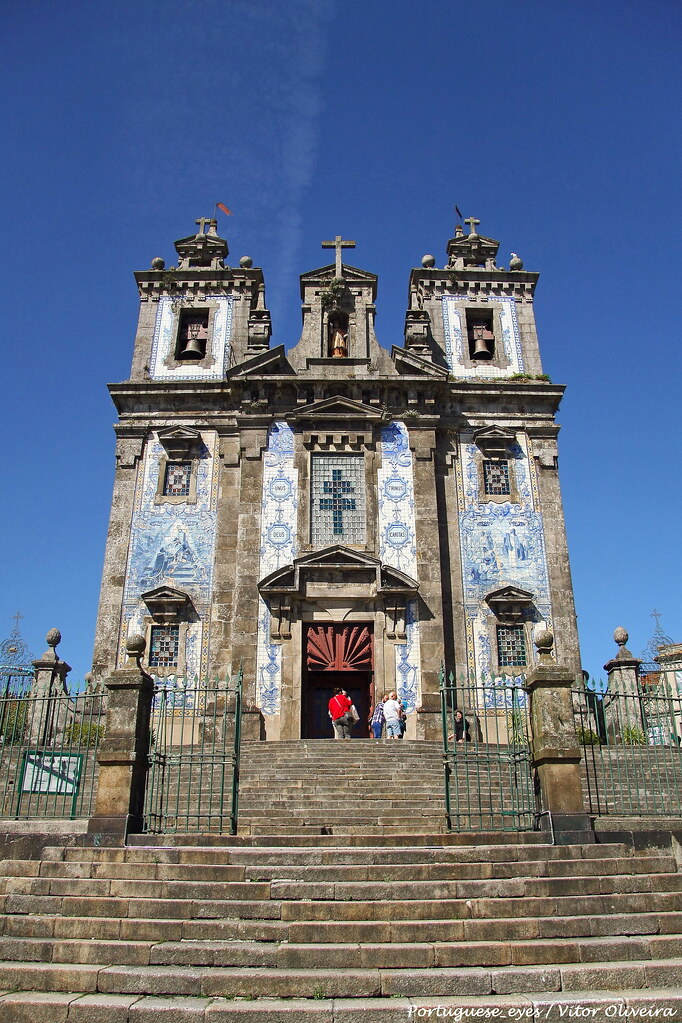 Photo by Portuguese_eyes
Photo by Portuguese_eyes
Igreja de Santo Ildefonso, or the Church of Santo Ildefonso, is a beautiful Catholic church located in the city of Porto, Portugal. It is one of the most famous and iconic churches in Porto, known for its stunning façade adorned with azulejo tiles.
Construction of the church began in 1709 and was completed in 1739. The design of Igreja de Santo Ildefonso is attributed to architect Manuel dos Santos Porto, who created a harmonious blend of architectural styles, primarily Baroque and Neoclassical.
The standout feature of the church is its façade, entirely covered in blue and white azulejo tiles. The tiles were added in 1932 by artist Jorge Colaço, who created a remarkable tile panel that depicts religious scenes, saints, and moments from the life of Jesus Christ. The intricate tile work extends across the entire façade, giving the church a unique and visually striking appearance.
The interior of Igreja de Santo Ildefonso is equally impressive, featuring an ornate altarpiece and decorative details in gold leaf. The church has a Latin cross floor plan and is adorned with beautiful paintings, sculptures, and religious artifacts.
The main chapel of the church houses the image of Santo Ildefonso, the patron saint of the church, to whom the church is dedicated. The image is venerated by the local community, and the church plays a significant role in the religious life of Porto.
Igreja de Santo Ildefonso is located in the heart of the city, in the Bairro da Sé neighborhood. It is surrounded by narrow streets and traditional Portuguese architecture, creating a charming and picturesque setting.
The church is not only a place of worship but also a popular tourist attraction. Visitors come to admire the stunning azulejo tiles, appreciate the architectural beauty, and experience the religious and cultural heritage of Porto.
The church is also known for its lively festivities. Every year, in mid-May, a popular festival called Festa de Santo Ildefonso takes place, featuring music, dance, processions, and various cultural activities. It is a vibrant celebration that brings the local community together.
In summary, Igreja de Santo Ildefonso is a remarkable church in Porto, celebrated for its breathtaking azulejo-tiled façade and religious significance. Its combination of architectural beauty, rich artistic heritage, and cultural importance make it a must-visit destination for those exploring Porto's treasures.
Torre dos Clérigos
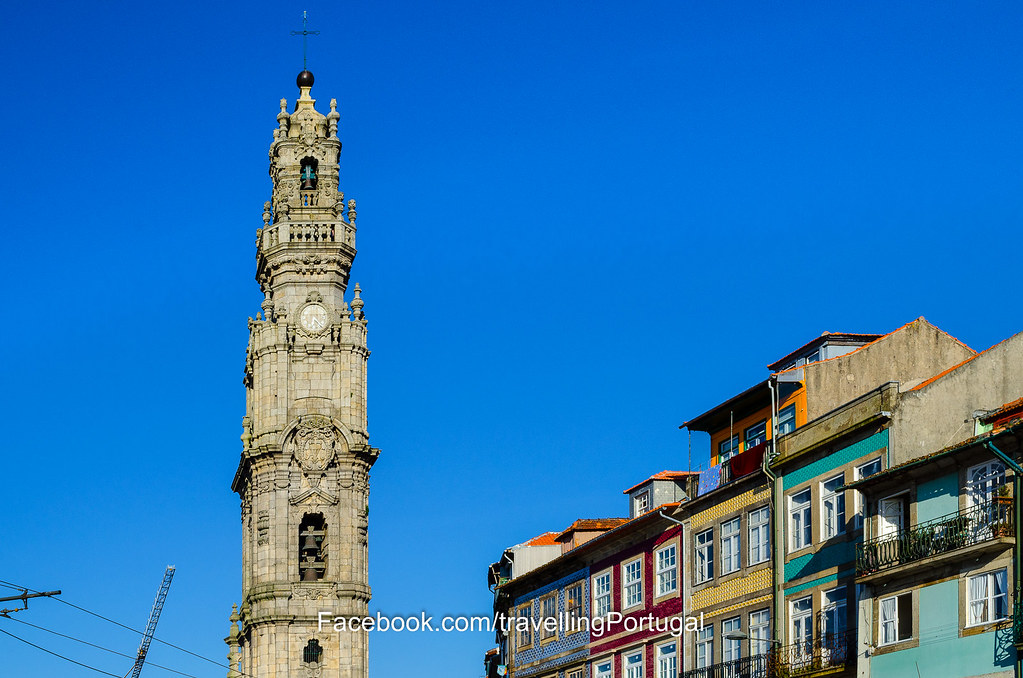 Photo by TurismoenPorugal
Photo by TurismoenPorugal
Torre dos Clérigos, or Clérigos Tower, is an iconic landmark and one of the most recognizable symbols of the city of Porto, Portugal. It is a tall bell tower located next to the Igreja dos Clérigos (Church of the Clergy), forming a part of a beautiful architectural ensemble.
Construction of Torre dos Clérigos began in 1754 and was completed in 1763. The tower was designed by the Italian architect Nicolau Nasoni, who left a significant architectural imprint on Porto. The tower was commissioned by the Brotherhood of the Clergy as a symbol of their influence and importance in the city.
The Clérigos Tower stands at a height of 75.6 meters (248 feet) and consists of six floors. It is constructed in the Baroque architectural style, characterized by its ornate and extravagant details. The tower's façade features decorative elements such as pilasters, scrolls, and statues.
Visitors can climb the 240 steps of the narrow spiral staircase inside the tower to reach the top, where they are rewarded with breathtaking panoramic views of Porto. From the observation deck, one can enjoy a bird's-eye view of the city's historic center, the Douro River, and the surrounding landscape.
Adjacent to the tower is the Igreja dos Clérigos, a stunning Baroque church also designed by Nasoni. The church is connected to the tower by a narrow corridor, and its interior features ornate altarpieces, beautiful sculptures, and intricate woodwork.
Torre dos Clérigos has become an emblem of Porto and a popular tourist attraction. Its prominent location in the city center, combined with its architectural grandeur and panoramic views, make it a must-visit destination for visitors exploring Porto's cultural treasures.
The tower is also known for its role in Porto's cultural and social life. It often serves as a venue for art exhibitions, concerts, and other cultural events, adding to its vibrant and dynamic atmosphere.
In summary, Torre dos Clérigos is a magnificent bell tower in Porto that offers panoramic views of the city. It is not only an architectural gem but also a symbol of Porto's cultural heritage. Climbing the tower is a memorable experience that allows visitors to appreciate the city's beauty from a unique perspective.
Câmara Municipal do Porto
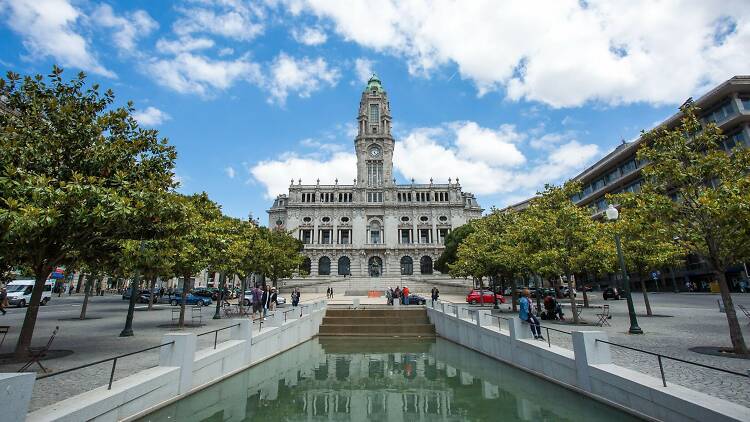 Photo by Time
Out Lisboa
Photo by Time
Out Lisboa
The Porto City Council, also known as Câmara Municipal do Porto, is the governing body responsible for the administration of Porto, one of Portugal's major cities and a significant cultural and economic center. Porto is located in the northern part of Portugal and is renowned for its historic city center, picturesque riverfront, and port wine production.
The Porto City Council is tasked with various responsibilities, including urban planning, infrastructure development, cultural promotion, social services, and environmental management within the city limits. It operates under the framework of Portuguese law and works in collaboration with other government entities at the municipal, regional, and national levels.
The council is headed by a mayor, who is elected by Porto's residents for a term of four years. The mayor leads the executive branch of the council and is responsible for implementing policies, managing municipal services, and representing the city's interests. The council also includes a number of councillors, who are elected to represent different political parties and constituencies within Porto.
In addition to its administrative functions, the Porto City Council plays a key role in promoting tourism, supporting local businesses, preserving cultural heritage sites, and fostering community engagement. It works closely with local stakeholders, including residents, businesses, and nonprofit organizations, to address the needs and concerns of Porto's diverse population.
Overall, the Porto City Council plays a vital role in shaping the future development and growth of Porto, ensuring that it remains a vibrant and livable city for residents and visitors alike.
© netPorto 2024 - David Cabral